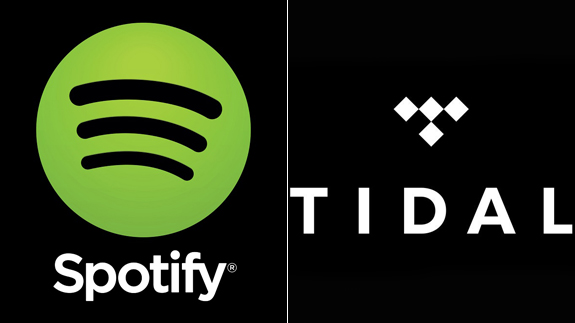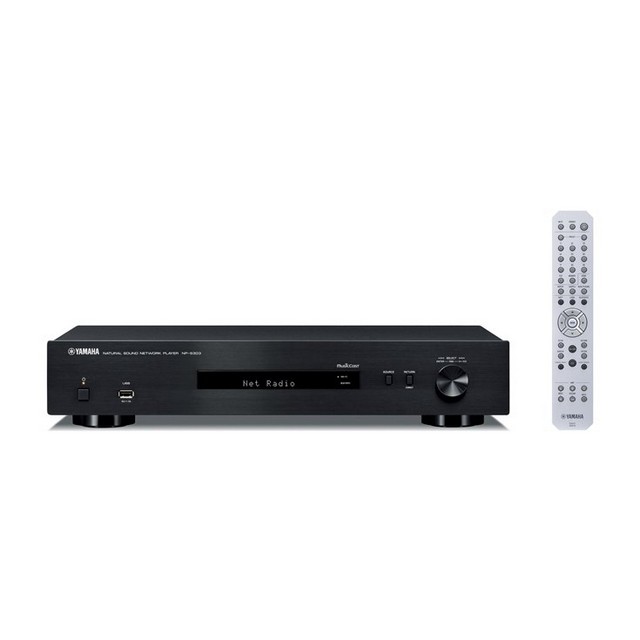
Spotify vs TIDAL and The Best Streamers to Use

Here at Rapallo we use both music streaming services to use on various HiFi components and speakers. We are fan of both services for many reasons. Using both for a few years now, we thought we would put forward the pros and cons, our favourite features of each, plus the best hardware that is available to use with each service.
Sound Quality
TIDAL markets their service as having higher quality streaming. TIDAL has 2 streaming tiers, Premium and HIFI. Premium is basically the standard base subscription. You get high-quality MP3 streaming with a bitrate of 320kbps. Their HIFI plan consists of HIFI sound quality which is equivalent to CD-quality audio with a bitrate of 1,411 kbps. Plus you get access to TIDAL masters, which is MQA (Master Quality Authenticated). MQA is the process of unpacking and streaming high-resolution audio. MQA is a file type and process developed by HiFi company Meridian, they promise the highest audio quality that is direct from the source and artist. Read more on MQA here. There is quite a bit of MQA albums available, and we are seeing this number grow significantly. It’s good to know when you are on the HIFI plan, everything should be streaming on at least 16Bit/44.1kHz CD quality.
Spotify’s premium plan enables users to gain access to what they call High-Quality audio. This is however at MP3 quality with the same bitrate of 320kbps in TIDAL’s premium plan. We must say Spotify does sound great on good speakers and equipment. Listening to TIDAL HIFI side by side, we prefer TIDAL. We noticed there is always a difference in gain/volume. TIDAL always sounds louder, there is also huge improvements in resolution and space. On most equipment we hear much more detail in the sound stage and it’s wider when listening to TIDAL HIFI compared to Spotify Premium.
- TIDAL’s HIFI Plan streams everything at 16bit CD quality (1411kbps), plus a growing amount of MQA albums (hi-res)
- Spotify Premium streams MP3 at 320kbps
User Interface
TIDAL has a slick dark theme to there user interface and applications. We love the look! On the Mobile Application, whilst on the “Now Playing” page you and swipe left or right to access suggested tracks and the current queue. We love the fact you can press the ‘info’ button and easily see the artist and song information, who played what instrument, who produced it and much more. One downfall of the TIDAL user interface is when you have to use it through multiroom wireless apps. Such as Yamaha’s MusicCast, Audio Pro’s app, and ARCAM Music Life App. You must login to TIDAL through the multiroom apps. We find using TIDAL through these apps make the user experience sluggish and clunky compared to using the slick TIDAL app.

Spotify’s user interface is just as good with the latest update simplifying the bottom menu bar to “Home”, “Search” and “Your Library”. Compared to the TIDAL app, when you swipe the album artwork in the “now playing” page you are skipping or going back through tracks, which seems to be more intuitive. If you are playing a playlist you can see the edge of the album artwork for the next track which is a nice touch.
In both mobile apps in the bottom left you are able to select devices on your network. There is a whole lot more HiFi speakers, Amplifiers, and streamers that are ‘Spotify Connect’ enabled. Spotify’s compatibility is way better than TIDAL.
- More devices and HiFi components are Spotify Connect
- TIDAL’s user interface can feel sluggish when using it through a 3rd party app (like MusicCast or DTS PlayFi)
- TIDAL becomes much easier to use when a device is Chromecast Audio enabled, because you can use the official TIDAL app. (eg. the CXN v2)
Music Discovery
Spotify has great music discovery features, that is constantly being improved. You can take any artist, playlist, album or song and turn it into what Spotify call a ‘radio’. This is all done through computer algorithms and that constantly adds and improves on your custom ‘radio stations’. We love this amount of flexibility.
We must also point out Spotify’s Discover Weekly playlist. This is great feature that automatically creates a weekly playlist that is based on your listening history. We found we discovered some great new gems with this feature, even though this is all computer generated it feels hand-made and is a testament to how far technology has come.
TIDAL has great discovery features as well. They base their playlists and recommendations from real people, music creators and famous artists. This gives a personal touch to the playlists. They do still implement computer generated playlist through “My Mixes” that bunches together genres of music and artists that you listen to regularly. Similar to Spotify’s “Daily Mixes”.
TIDAL differentiate their service from Spotify by offering regular editorials, TV shows and Live concert videos. Being the destination for music lovers. A lot of this content is heavily tailored towards the Hip Hop and Rap genres, but we find this content is diversifying by the minute.
- Spotify’s “Discover Weekly’ tailors a playlist based on your listening history. It feels very personalised.
- TIDAL offer regular editorials and their playlists are hand picked from famous artists and music creators.
Subscription Plans in NZD
Spotify edges TIDAL on value for money. They offer their service with ad banners, and audio advertisements whilst listening. When starting the premium subscription they offer a 3 month trial and then after that, it is $14.99 NZD a month.
TIDAL offer the same amount of features with their Premium plan at the same price $14.99 NZD a month with a 30 trial for new users. Then their HIFI plan with CD quality streaming and MQA is $29.99 NZD a month.
Rapallo’s Top Picks for Streamers
Cambridge Audio CXN V2

Always on the top of our list for network streamers. The V2 is Chrmoecast enabled, so TIDAL works flawlessly through it. We love the mini display on the unit so you can see the album artwork and track information. It is the best sounding network streamer we have used and is a permanent fixture in the showroom. If you use TIDAL as your main audio source in your HIFI system, the CXN V2 is hands down our first recommendation. It also works perfectly for Spotify connect as well (most of our recommendations will!).
- Best streamer to use with TIDAL.
- Extensive inputs and outputs.
- Features Burr Brown up-scaling DAC
Yamaha MusicCast NP-S303

Using all the features of Yamaha’s MusicCast multiroom audio ecosystem, this is a great streamer to implement into any HiFi system. Giving you the ability to access NAS streaming, Spotify and TIDAL. When using TIDAL you must login through the MusicCast app.
Using TIDAL can be clunky, but we recommend creating your playlists and saving your favourite albums and artist in the regular TIDAL app. Once you have done that you can access these under ‘my music’.
This simple streamer just features 1 analogue output and 2 digital outputs.
- Adds multi-room functionality to any system
- Great for a MusicCast ecosystm
- Great for Spotify (like most streamers)
- TIDAL works, but is a little slow
ARCAM rPlay

The rPlay makes use of DTS PlayFi. This app is very easy to use. Whats great about the rPlay is the 2 analogue outputs. You can choose between fixed or variable output. So you can choose to adjust the volume through the smart phone app or not. TIDAL again has to be used through the PlayFi app, but it seems to be a little quicker than the MusicCast app.
- Great for a DTS PlayFi ecosystem
- Great for Spotify
- TIDAL works, but you must use the PlayFi app.
Sources:
Cambridge Audio, ondesoft, what hifi, TIDAL, Spotify, Yamaha, ARCAM